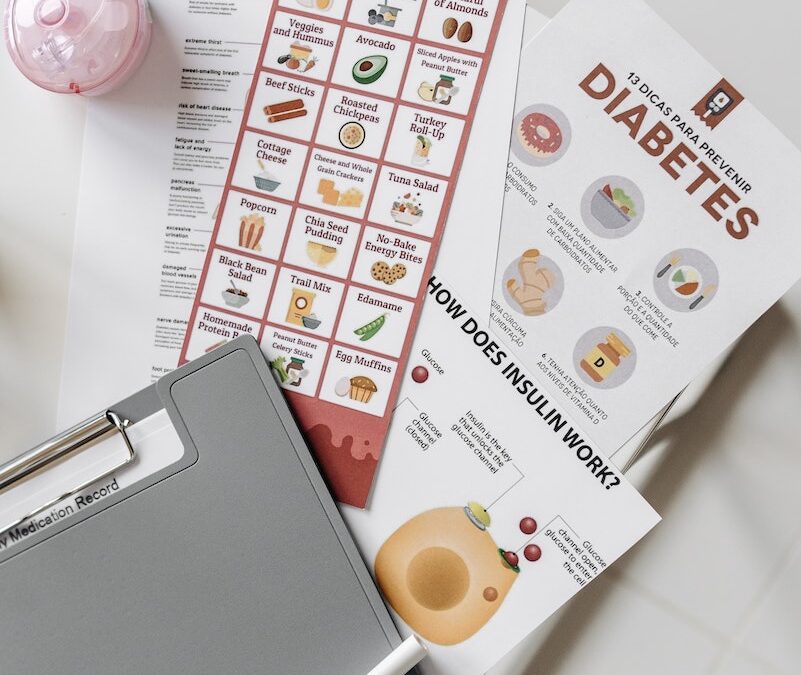
by I Dance With Diabetes | Sep 16, 2022 | Blood Sugar
Crossing into prediabetes
I won’t bore you with my blood sugar numbers. I’m not horribly over into the prediabetic range, but I’ve been there for a while. My doctor isn’t quite concerned yet but in my reading on prediabetes and type 2 diabetes I’ve seen enough. My plan to deal with prediabetes is developed below. Writing this article is a bit like writing a contract and signing it. I’ve made a written commitment and will work to say with it. So here we go.
By all accounts, I’m a reasonably healthy person. Through a friend, I was encouraged to look into diabetes and what is all involved with it. What I found intriguing about diabetes and in particular prediabetes is how silent it is. You can have diabetes and not have any obvious symptoms. At least with covid-19, you can tell something is wrong. Diabetes and its associated conditions can cause coronary arteries to become narrowed or inflamed. The worst-case scenario would be a heart attack or stroke. These conditions are serious and can be deadly, so it is important to be aware of the signs and symptoms and to seek medical help if you think you may be at risk.
Well, I’ve noticed in the last several years I’m getting patches of red on my ankles. It certainly looks like small blood vessels are the issue. My doctor even noticed them on my last physical. OK, it’s time to get serious about this. In my reading diet is a huge factor. I’ve known for quite a while that most of the food we eat is some kind of processed food. If it comes in a package, can, or bottle it’s probably processed food.

Processed foods
Here’s what Google says about processed food, When ingredients such as oil, sugar, or salt are added to foods and then those foods are packaged, the result is processed foods. Processed foods are not as healthy for you as fresh foods because the processing removes many of the nutrients from the food. Some common examples of foods that are staples include bread, cheese, tofu, and canned tuna or beans. Staples are typically foods that are high in nutrients and calories, yet low in cost. They are often used as the basis for meals or stored for long periods of time.
As a kid growing up I remember my mother buying what we would now call fresh food. Our veggies weren’t always off the vine, but most of what we ate was frozen veggies. Now tonight we had Kung Pao chicken from a bag. Hmmm, I’m going to have to start reading labels. In my research, I’m finding carbohydrates are a key item the look for. However, refined carbohydrates and sugars are where the focus seems to be.
Processed food is full of these items, refined carbohydrates, and sugars. Processing the food items removes natural fiber, protein, and fat. Without these items, your body only has the carbohydrates to process, which becomes a blood sugar rush. Fats, protein, and natural fiber slow down the digestive precRemoving these items leaves you with carbohydrates. Though low-carbohydrate diets are not the only thing you can do to manage prediabetes. Being physically active is another step in the right direction.
Your blood sugar is a source of energy for your cells. If the cells aren’t using the blood sugar, then it will be converted to fat. So what should you do to burn off the blood sugar? Some kind of activity. Quit sitting! Get up and walk. Start out slow and work up to it. Walk to the end of your driveway and back. it’s a start. I’m assuming your driveway is a mile long:). Start out doing 5 minutes. Add a minute or so a day when it starts to feel easy. add time to burn more. The point is the more you can build up the more you will burn. Remember you should check with your doctor to be sure physical activity is something you should be doing.

Fasting to health
The next point to consider is intermittent fasting. The beauty of fasting is it addresses the amount of blood sugar in your body. Simply put prediabetes and type 2 diabetes are just too much sugar in the body. If we think of a campfire we control the flames by the amount of wood you put in the fire. We can think of wood as the blood sugar. If you put in a lot of wood the fire will get larger. You don’t “feed” the fire it dies out. The body does the same thing. When you eat blood sugar rises. When you fast the body starts to burn off the fuel (blood sugar). If you’re fasting the body looks for fuel and creates blood sugar from the stored fat in the body.
Fasting is different than a calorie reduction plan. Studies have shown the body’s basal metabolism is maintained during a fast. This is because of the hormones that are released during a fast. This means the body is able to maintain its level of activity. Calorie reduction causes the body to reduce its activity levels to ration the blood sugar. Your body goes into “starvation mode” when you do a reduced-calorie diet. Your body wants to be fed.
Fasting is a way for you to naturally reduce sugar from storage in the body. It’s something like using the sugar in a bowl and not refilling it every time you use sugar. Fasting allows the bowel to empty. This way when you eat, the amount of sugar going in the bowl doesn’t overflow. One important point to keep in mind when fasting and if you are on drugs to manage your type 2 diabetes, is to work with your doctor to adjust the dosage of drugs you are taking. The drugs could cause your blood sugar to drop too low and cause undesireable conditions. Just like with any medical condition there are physical changes. You should be aware that that is part of the process. However, report unexpected changes to your doctor.

Wrapping it up
I’ve started a fasting plan and am paying closer attention to my plan to deal with prediabetes. I hope to reverse my direction and get back into the normal range of blood sugar. Change in my lifestyle will control my blood sugar and keep me in good health. Please join our Facebook group, Dancing with Diabetes, and check out our other blog articles.
Read more: Silent diabetes, processed foods,
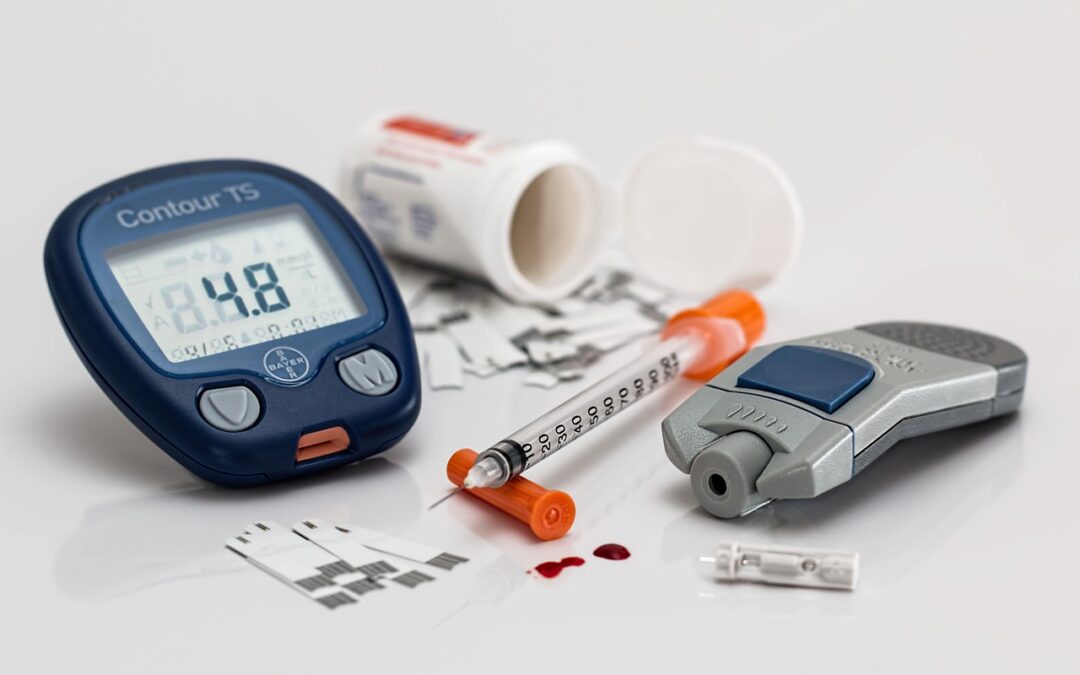
by I Dance With Diabetes | Aug 31, 2022 | Blood Sugar
Our world we live in seems to be on a wild ride into the diabetic world. There is little doubt that diabetes is growing around the world. It’s not only a problem in developed countries but also increasing in developing countries. So what is the problem, why are we suddenly seeing diabetes becoming the problem it is? The answer is it’s good for profits. In this article, Blood sugar and insulin resistance, we’ll review what is the starting point for diabetes and why it affects you.
Let’s begin with the food we eat. We have all seen the standard food chart. It was initiated by the United States Department of Agriculture (USDA). But it’s not the USDA’s purpose to evaluate food as much as it was to promote farmers selling their crops. And what are those products, corn, wheat, soy, and the list goes on for a bit. With all of this food coming in from the fields, manufacturing grain-based products for a profit became an easy gig. Manufacturers could fill store shelves with all sorts of tasty treats. Of course, you have to make it taste good so in goes the sugar.
Now we are starting to get to the root of the problem, the food we eat. As a kid growing up in the late 50s and 60s, I remember going shopping with my mother. The food she bought, especially for dinner, was fresh-cut meats, veggies, and potatoes. There were few processed foods for dinner. None of my family was over wait. When we finished eating we were full.

Back to the 80s
Then enter the 80s. Life was getting faster, kids needed to be a practice or after-school events. Time was becoming an issue. It was becoming easier to open packages and cook up a fast dinner. We never looked at the package ingredients. All those chemical names, who paid attention to them? Sugar and salt were added to enhance the taste. A friend of mine worked for a company that produced these products. A favor saying was better living through chemistry. We laughed at the saying, yet never realized the health impact on our systems. Remember those lunch snacks, we said they had a shelf life of years.
Companies made tremendous profits from making food that made use coming back for more. You just could stop eating them. What we didn’t know or want to understand was what it was doing to our bodies. The food we ate wasn’t lined up with what our bodies needed. Our bodies’ chemistry was and is still being thrown off. We had the right name for it, we called it “junk food”.
So what is the problem? The average joe on the street is eating more carbohydrates than they need. We get a fast rise in blood sugar, also known as blood glucose, but crash in a short period of time. If we keep eating carbs we go through the cycle of creating more blood sugar and the crash a short time later. This is where we start to see the problem of insulin resistance. If you remember the movie, “Wall-E” there was the little robot that swept the dirt off the floors. When Well-E would go by and leave a trail of dirt the little robot would come to life and clean up the mess.
Our bodies work in a similar manner. You eat carbs and your blood sugar rises. Your pancreas releases insulin, the little robot, to open up cells to take in the blood sugar. Blood sugar levels return to normal and your insulin levels drop. No need to clean up. This is where fats can come into play. Fat does not trigger an insulin response like carbs. Digesting fats provides a feeling of fullness. You stop eating and don’t have the desire to eat, It takes longer for fat to be digested.
Fat vs blood sugar
Since fat doesn’t trigger an insulin response you don’t have insulin in your blood as carbs call for. This is the challenge of carbs, they give a quick shot of blood sugar, the pancreas releases insulin, and your blood sugar drops. Your blood sugar drops quickly and you’re hungry again. This is why kids bounce off the wall after eating food with lots of sugar. Then the sugar crash. It is this cycle of high then low blood sugar and the insulin rush that over time causes stress on the body’s systems. Think of it like driving a car. Would you rather step on the gas and then let off, or maintain a steady speed going down the road?
With the constant presence of carbs in our diets. Insulin is released into the blood to manage your blood sugar levels. Insulin starts to become a bad taste to your cells. The cells start to become resistant to insulin. Cells have enough blood sugar, they don’t want more. Blood sugar isn’t being taken in by the cells. So the pancreas says more insulin. Your pancreas is working harder to great more insulin. The constant insulin in the blood begins to affect the rest of your body’s systems.
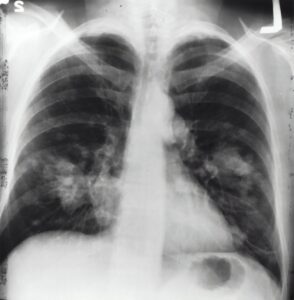
Related diseases
Research has shown that blood sugar and insulin are key factors in these diseases:
- Hypertension
- Cardiovascular disease and strokes
- Alzheimer’s disease
- Cancer
- Chronic pain and autoimmune disorders
- Depression and anxiety
- Weight gain
- Fatty organs
- Gas and bloating
- Fatigue or insomnia
- Immune system function
- Hormonal problems

It can be reversed
It doesn’t happen overnight. It is a long time coming process. The sooner you begin to manage the number of carbs you eat the less chance of long-term damage to your body’s systems. Type 2 diabetes is the most common form of diabetes in the world. It’s a process that can be reversed. We need to move away from high carbs foods and processed foods. Sugar is the white crystal we need to move away from. Returning to the unprocessed foods we were eating 40 – 50 years ago will go a long way to managing our blood sugar. As the saying goes “You are what you eat.”
We hope you found this article helpful and that you will join our Facebook group, https://www.facebook.com/groups/dancingwithdiabetes, and check out our other blog articles.
Read more: Smart Blood Sugar

by I Dance With Diabetes | Aug 23, 2022 | Blood Sugar
With technology, diabetes doesn’t have to be a dead-end street
Wearable Technology for Diabetes is moving the treatment for diabetes into a new way of living. This article will cover some of the ways technology is making life much more comfortable and manageable life.
Diabetes is a disease that affects the body’s ability to use or produce insulin. In the early stages of this disease, high blood sugar levels can be managed by taking oral medications. However, if left untreated these high blood sugar levels will cause a variety of life-threatening conditions.
We will discuss the current status of diabetes in this section. We will discuss the differences between pre-diabetes and diabetes and the effects metabolic disease has on people with pre-diabetes.
The problem of how energy from food is processed in the body leads to a variety of metabolic diseases. These diseases are genetically passed on through families, can be triggered by environmental factors such as diet and stress, and are often made worse by the patient’s own habits.
There are three main types of metabolism, type 1, type 2, and pre-diabetes. Type 1 is known as the “insulin-dependent” form of diabetes. When the pancreas doesn’t produce insulin, which helps break down sugars and starches in the body, it can lead to type 1 diabetes.
Prediabetes is a condition in which the average blood sugar level, while not high enough to be classified as diabetes, still remains higher than what is considered normal. Prediabetes can be managed with healthy eating and regular physical activity, but if left untreated it can lead to type 2 diabetes within 10 years.
Diabetes is a chronic disease
Diabetes is the leading chronic disease in the world. It affects over 400 million people and is expected to rise to 592 million by the year 2045. About one-third of Americans have prediabetes, which increases their risk of developing type 2 diabetes by as much as seven times.
Diabetes is a chronic disease that can be managed properly by taking the proper precautions. In the past, treatment and prevention of diabetes were exclusive to injects and diet control, but as times have changed treatments and prevention have become much more advanced thanks to the use of technology.
A lot of people rely on Insulin pumps for the treatment and prevention of diabetes. These small, lancet-style devices that deliver insulin through a catheter into your upper arm or abdomen are among the most effective ways to regulate blood sugar levels and are often a part of an individual’s diabetic treatment plan.
The pump monitors your blood sugar level every 5 minutes or so, and if it goes above a safe range the pump will give you insulin to help keep your sugar under control. The device and monitor are usually combined with a Continuous Glucose monitor which can measure the sugar in your fluid every few minutes during the day.
As the treatment of diabetes evolves, scientists are beginning to look at how genetics may play a role in how the disease develops and how new treatments may be found which take this into account. Geneticists are looking at specific genes that have been linked with diabetes, as well as other factors such as diet and lifestyle choices, to identify possible links and potentially find new cures for the disease.
Wearable technology has been evolving for years and is now becoming a common fixture in the modern workplace. One of the reasons Wearables are rapidly gaining popularity is due to the fact that they can be used to track the amount of blood sugar levels in a person’s body.

Wearable technology has been proven to be an excellent way to track diabetes. It not only allows constant feedback on glucose levels and sends you alerts if they have risen or fallen out of the desirable range, but it also provides a 24-hour look at your lifestyle habits which can help identify any gaps in care.
Wearable fitness trackers are great for people with diabetes, as they can provide notifications when their blood sugar levels are too high or too low. They also allow you to track your blood sugar levels and tell you when it’s either too high or too low, allowing those with diabetes to avoid dangerous situations.
Wearable technology, which can be used to track various health parameters, is revolutionizing the healthcare industry. These devices are making patient care more efficient by providing quality data and reducing time spent on paperwork. They also have the potential to reduce hospital readmissions and medical errors with their monitoring capabilities.
Companies are developing fitness apps that can be used for managing diabetes. These apps can provide insights into the person’s diet and activity level, with the goal of tracking the person’s activity level. Reminders are provided when they need to check their blood sugar levels or take their insulin shots.
The artificial pancreas system (APS) is an AI-based technology that has been developed to help people with diabetes better manage their blood sugar levels and avoid dangerously low blood sugar episodes.
A Continuous Glucose Monitor System is made up of a Continuous Glucose Monitoring device, an Insulin Pump with Alnsimer (for adjusting insulin delivery in real-time), and a software system that adjusts the amount of insulin being delivered based on continuous blood sugar level measurements.
Artificial intelligence has been used in the medical field for a long time now. The new technology of the artificial pancreas system has been developed to help people with diabetes. This system automatically measures the glucose levels in the body and injects insulin accordingly without any human intervention.
The way in which we manage diabetes is being influenced by the growing technology of artificial intelligence. A prototype artificial pancreas is a system using sensors and software to help regulate blood sugar levels in people with diabetes. There are many benefits to this type of device, including the fact that it can work to regulate blood sugar levels without requiring any input from a diabetic’s daily routine and without needing adjustments, as well as the fact that it can provide

AI is coming
The Artificial Pancreas can regulate blood sugar levels. The device is revolutionary because of its ability to automate both the delivery of diabetes drugs and the monitoring of their sugar levels. People with type 1 diabetes who don’t have to worry about manually checking their blood sugar levels won’t have to.
The artificial pancreas has been in development since 1989 and was initially tested in clinical trials as early as 2003. This technology is a type of closed-loop system which monitors blood sugar levels and then regulates insulin release to control the blood sugar.
The artificial pancreas has been approved by the FDA for patients who suffer from type 1 diabetes, with only one exception – it is only approved for patients at least 14 years old or 5 years old with type 1 diabetes that can’t be controlled by insulin pump therapy alone. The device has been shown to reduce the risk of hypoglycemia (low blood sugar), improve A1c levels, and reduce the number of nighttime glucose checks
The device is not currently approved for use outside of clinical trials but it is being considered for use by people with type 1 diabetes who are unable to manage their blood glucose levels without it.
Choosing a diabetes management app for your children can be hard but there are some things to consider that will make the process a little easier. One of the most important factors is how much the app will cost. You also want to consider what features it has and whether or not it is compatible with other medical devices so you can monitor your child’s health as much as possible.
Children with diabetes require a strict diet that is tailored to their individual needs, which must be supported by an app that will track the food intake and blood sugar levels so that the child can find out when they are getting closer to a dangerous level and take appropriate action. There are many apps on the market but only a few of them are specifically targeted at children and therefore not suitable for this case.
Do you know what to look for when choosing a diabetes app for your kids? The design of the app is the first thing to think about. It should be easy to use for kids. It should be interactive so that kids can be helped to take care of themselves more efficiently.
Conclusion
Developing wearable technology for diabetes can be very helpful in managing one’s diabetes. The challenge is you must understand what the device does and how it will work with you. To use a technological device without your doctor’s advice is foolhardy. Do the research, but be sure to verify the information with several sources. Technology can be life-changing, for good or bad.
Read more: Verywellhealth
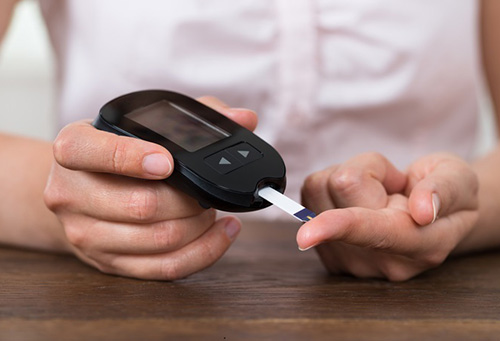
by I Dance With Diabetes | Aug 23, 2022 | Blood Sugar
The diet for people with type 2 Diabetes improves their metabolism and slows down the development of diabetes
Many people have type 2 diabetes for years before their early symptoms can be spotted and many don’t even realize they are at risk. The earlier type 2 diabetes is detected, the better chance a person has to manage the disease.
More than 4.9 million people in the UK have diabetes and it is estimated that there are thousands of cases that are not yet diagnosed. The NHS has now made it much easier to do a self-test with your doctor to find out if you have diabetes or another type of condition that means you need medication, such as high blood pressure, kidney problems, or heart disease.
Type 2 diabetes is far more common than type 1 and accounts for around 90% of all adult cases in the UK, while only 8%, according to Diabetes UK, have type 1. Type 2 diabetes is characterized by a resistance to insulin and affects the way that the body processes glucose.
More than 6 million people are at increased risk of developing type 2 diabetes, and more than 750,000 people are currently living with the condition but are not aware of it.
Research has shown that one of the most effective ways to reduce your risk of developing Type 2 Diabetes is by making some lifestyle changes. These changes may include diets, exercise, and weight loss to help reduce your risk by as much as 50%.
EARLY DIAGNOSIS IS KEY
Health professionals emphasize early diagnosis is key as the early stages of this disease often span five or maybe six years before symptoms become noticeable. This is why it’s so important to be aware of the indicators to detect type 2 diabetes as soon as possible and take the necessary steps to prevent any complications.
Type 2 diabetes is a lifelong condition that is typically caused when insulin isn’t produced in balance with the body’s needs and can often be linked to being overweight, being too sedentary, or having a family history of type 2 diabetes. Type 2 diabetes can cause health complications like increased blood sugar levels, cardiovascular disease, kidney damage, nerve damage, and blindness
It can cause the level of glucose in the blood to become too high and this can lead to a variety of serious health conditions, including heart disease or a stroke.
A variety of lifestyle adjustments and medical interventions are required for people with Diabetes to live a long and healthy life. In order to maintain balanced blood sugar levels, people who have diabetes should exercise, eat healthily, and have their blood tests checked regularly. The lifelong nature of diabetes also often requires people who have type 1 diabetes to take insulin injections on a regular basis.
As type 2 diabetes is a gradually developing condition, medicine, at some point in time, may be required and this will normally be in the form of tablets or injections.
If you are a person with this condition, you are more at risk of developing it. The earlier you recognize these warning symptoms, the earlier you will be able get in control. You should monitor the following points:
– people are over 40 or 25 for south Asian people.
– A close relative of a parent, brother. or another family member with diabetes who may be able to provide this information.
– if your weight is higher than the prescribed weight for your build and size.
– if you are or your family comes from any of these locations of Asian, African of the Caribbean, or black African origin
You can find out your risk for type 2 diabetes by answering a few questions from your health provider. You can get help with your Diabetes Prevention program if your risk score is dependent on it.
BE SMART AND GET CHECKED
Many people, even those who are not diabetic and do not know they currently have the condition, are unaware that they have been diagnosed with diabetes because it can exist with no symptoms which makes it difficult to spot.

However, it is important to keep in mind a few key symptoms that may indicate the condition. The main symptoms of ovulation, according to the NHS, include:
– going to the washroom more than usual, particularly at night
– feeling thirsty all through the day
– feeling very tiring.
– your weight is dropping and you’re not trying to lose weight
– itching around the penis or vagina or symptoms of thrush.
– healing time for wounds is longer than normal
– your vision begins to degrade
Type 1 diabetes, often referred to as “juvenile diabetes” can develop quickly over weeks and is typically diagnosed around the time of puberty.
Both type 1 and type 2 diabetes can be diagnosed by means of either a blood or urine test.
If you have been diagnosed with Type 1 Diabetes, a diabetes nurse will be able to show you how to manage the condition in your day-to-day life, including learning how to test your blood glucose and inject insulin.
CHANGING LIFESTYLE IS KEY
Your doctor should discuss other lifestyle factors, such as alcohol consumption and smoking, in addition to your diet and exercise habits. They will also determine whether you might need to take medications.
Most people diagnosed with diabetes need to take medicine to control blood sugar levels and get close to normal. In those with type 1 diabetes, insulin must be taken every day for the same purpose.
Some types of diabetes medications can lead to a condition known as hypoglycemia or low blood sugar. This happens when blood sugar levels drop below a certain level, when this happens, your doctor should ask you to check your blood sugar by taking regular tests with a glucose monitoring device.
If you have frequent or severe hypos where you usually take the blood test twice a day, you could be offered a continuous glucose monitor or flash monitor which would be worn on your skin and allow you to check your blood sugars at any time.
A healthy diet of around 2.5 hours of physical activity each week can help with blood sugar levels. Fruit, vegetables, and pasta are high in sugar, fat, and salt, so the National Health Service recommends not eating any of them.
There is mounting evidence that a low-calorie diet (800 to 1,200 calories a day) can be used as an effective treatment for type 2 diabetes. Some people have even gone into remission by following this low-calorie diet for around 12 weeks at a time. Remember, the earlier you recognize these warning symptoms, the earlier you will be able get in control.
H/T: @NationalWorld
Fasting Mimicking diet has become a hot topic of nutrition recently because it improves health for people with type 2 diabetes.
Recent studies show that abstention from eating food for a period of time might have a variety of health benefits, including weight management, diabetes, and cancer risk reduction. Various diet programs were created to incorporate the fast mimicking diet, which is gaining popularity these days. The idea behind it is to make the body think that it is fasting despite it is not. So, what is the purpose of a fasting-mimicking diet?
Intermittent and fasting-mimicking diets are the two main types of fasting diets. The former is an eating plan where you change from fast to eating during certain hours. Fasting-mimicking is more detailed about when and how many calories can be eaten. A fast-mimicking diet is less difficult to gain the benefits of fast, according to US News. Process fools the body into it is not eating or drinking for five days. Dr. Valter Longo created a plan to find a balance between eating more than needed and not enough. Dr. Longo over saw in-depth research into the topic of food restriction and what it could do for longevity and health. He formulated the ProLon Fasting Mimicking Diet based on his research after founding the L-Nutra technology company.
FASTING CAN WORK
Researchers found in a recent study that the six-month intermittent fast in patients with type 2 diabetes enhances metabolism and reduces the progression of the disease. The Fasting-Mimicking Nutrition Program is safe if there is a combination of personalized nutrition consultation and could be implemented into clinical practice, as reported by the company’s press release. The program is suited to people with type 2 diabetes who are not happy with keeping their blood pressure in check using medicines and people who wish to have their condition completely out of sight and out of mind.

Amy Burkhart’s blog post shared that Dr. Longo and his team at the Longevity Institute at The University of Southern California have been working with “chemical pathways” that regulate the structure of the body. The autophagy of cells keeps them living and in a high level of energy, as well as removing failing cells that can cause sickness and increase aging. A fast-miming diet speeds up the process, meaning less clean-up is taking place, which can result in less risk of health problems.
In addition, nutrient-sensing pathways, and how the environment affects the genes are involved in the epigenetic expression. Epigenetic expression and how the environment shapes the genes are some factors that are also involved. One person gets a disease while the other is unaffected by it. The five-day plan was created by the team to promote autophagy in the body’s cells. They say it is a good idea to do it every up to 6 months to keep its benefits. The diet for people with type 2 Diabetes improves their metabolism and slows down the development of diabetes.
Please join our Facebook group and check out our other blog articles.
H/T Source: Science Times
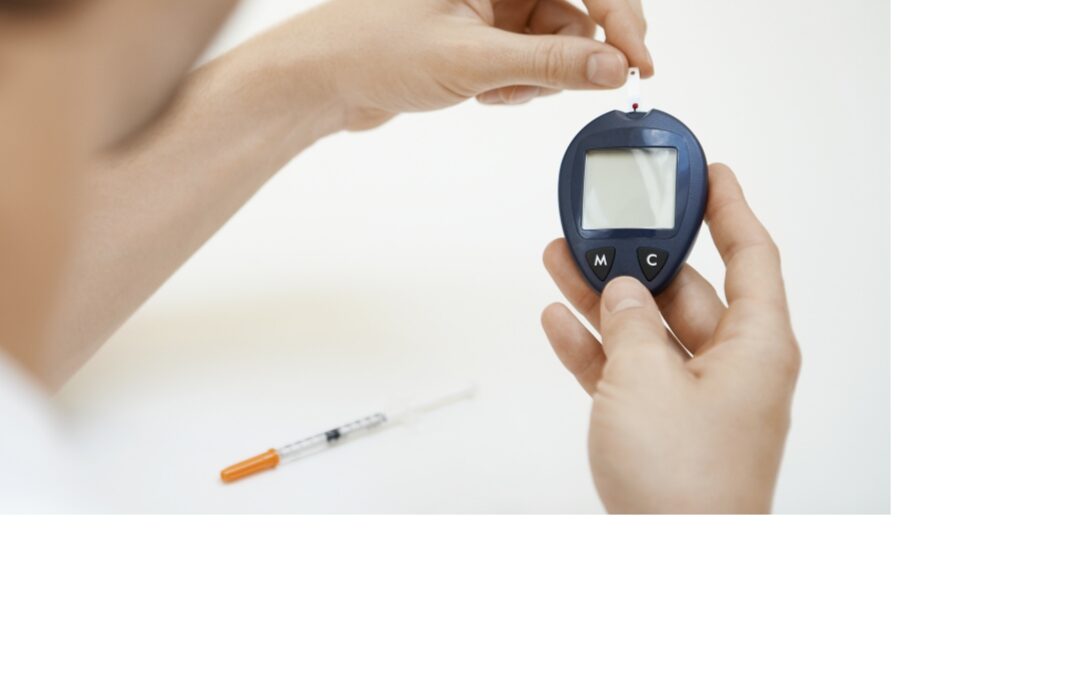
by I Dance With Diabetes | Aug 23, 2022 | Blood Sugar
Tips to lower blood sugar
Blood sugar, also known as glucose, is the center of diabetes. It is the central item that diabetes revolves around. Too high or too low blood sugar will cause a myriad of health issues. In this article, we will focus on blood sugar and ways to manage it.
5 easy tips to lower blood sugar
The Ketogenic Diet is a nutritional approach that is high in fat, moderate in protein, and low in carbohydrates. It was designed to help limit the production of glucose because it’s an important source of energy for the body.
Diabetes patients can benefit from a low-fat diet, which lowers blood sugar levels. It also helps with weight loss by giving a sense of satiety. The diet may be hard to maintain and not sustainable for everyone.
In a study conducted in 2015, it was found that patients with type 2 diabetes were better at managing their blood sugars as a consequence of eating a high-fat diet. There was a study that showed a reduction in levels of HbA1c and an improvement in glucose control. There was a study done in the year 2013; it showed the same results when it came to Insulin sensitivity and glucose control.
These help lower blood sugar levels and make it easier for the body to process sugars.
There are some types of food that are not harmful to your diabetes-friendly foods including vegetables, fruits, and nuts.
A low-carb diet is a type of weight loss diet that restricts the intake of carbohydrates. The benefits of a low-carb diet are well documented in the medical literature and include improved blood sugar control, better cholesterol levels, and reduced risk for diabetes.
The best thing about a low-carb diet is that it doesn’t require calorie counting or measuring portions. All you have to do is cut back on carbs and you’ll lose weight.
The low-carbohydrate diet is a weight loss diet that restricts carbohydrates such as sugars, starches, and grains. The reason for this restriction is that these carbohydrates are converted into glucose in the body and lead to an increase in blood sugar levels.
Other benefits of the low-carb diet are that it reduces appetite, which helps with weight loss. It also increases the level of HDL cholesterol which improves heart health. Diabetics can benefit from this type of diet because it can help with blood sugar control.

The most popular types of low-carb diets are the ketogenic diet, the Atkins Diet, and the South Beach Diet. These all restrict carbohydrate intake to less than 60g per day. The following list is suggestions to help manage blood sugar.
- Consuming more fiber can lower blood sugar levels. Whole grain, vegetables, and fruits are some of the fiber-rich foods.
- Regular exercise can help lower the amount of blood sugar in your body by releasing it into the bloodstream at a steady rate, which in turn helps the body burn calories and prevent high levels of sugars from building up in the bloodstream.
- Sugary drinks like soda and fruit juice can increase the risk of diabetes and should be avoided as much as possible. Drink water instead.
- Increasing blood sugar levels can be caused by alcohol consumption, and you can limit your alcohol intake.
- Reduce stress in your life
- Get enough sleep.
More ideas to reduce blood sugar
The first thing you need to do is to lower your calorie intake. If you are experiencing a calorie deficiency, your body will release hormones that tell it to store fat for future use. This is one of the reasons why people with diabetes are at a higher risk of obesity and heart disease
To avoid this, eat three meals a day with five or six small snacks in between. The goal should be to consume about 500-600 calories per meal and 1500-1800 calories per day. You should also try to eat more protein, healthy fats, fruits, vegetables, whole grains, and dairy products while cutting back on processed foods like pasta or white bread, sugary soft drinks
The first thing that you need to do is find out if you are at risk for diabetes. You can do this by going to your doctor and getting a blood test done. If the test comes back with high levels of sugar, then it’s likely that you have diabetes and need to make changes in your diet and exercise routine.
To start, you should cut back on sugary foods by avoiding anything white (bread, pasta, potatoes), as well as adding in lots of fresh fruit and vegetables in every meal.
Diet and exercise changes can lower your blood sugar levels. Here are a few things you should do if you want to get started.
Eating foods that are low in fat, calories and sugar can make a meal plan.
It is recommended to include vegetables and fruits in your diet as they are full of minerals, vitamins, and nutrients that are essential for maintaining a healthy lifestyle.
Drink at least 8 glasses of water every day, more if you are exercising heavily or are in a particularly hot climate.
Exercise at least 150 minutes per week by doing any form of exercise that includes moderate-to-heavy physical activity. This can be anything from running to lifting weights.

It is very important to get enough sleep every day, as it helps your brain function at its best. Aim for a minimum of 7 hours per night, and try to increase your sleep time even more if you struggle with feeling tired during the day.
There are some symptoms that you may experience when your blood sugar levels are low. There are many different types of headaches, from feeling faint to have a throbbing head.
The most common symptom of low blood sugar is the feeling of being hungry all the time. Your body will be trying to find food in order to get the glucose it needs to function. If you don’t have enough glucose in your bloodstream, you may experience dizziness, sweating, and confusion.
One of the symptoms you may experience while fasting or after a missed meal is low blood sugar levels. If this occurs, drink some juice or eat a small carbohydrate-dense snack like crackers to raise your blood glucose levels quickly.
Lose Weight with a Low Blood Sugar Diet
When the level of glucose in the blood drops below a certain point, it can lead to a condition called hypoglycemia. This can happen after an extended period of not eating and leads to symptoms such as increased heart rate, anxiety, and shaking. Some people may also experience confusion or dizziness when suffering from hypoglycemia.
Blood glucose levels are a measure of the amount of glucose in the blood. The higher your blood glucose levels, the more likely you are to experience conditions like heart disease, high cholesterol, and diabetes.
Common food items which can trigger a low blood sugar episode are fruits such as apples and oranges. Foods that can be eaten with low blood sugar are bananas and toast. Foods to avoid with low blood sugar include alcohols such as beer and wine, and carbonated drinks, like sodas.
In order to stave off the onset of hypoglycemia and stay full throughout the day, you should consume protein-rich foods such as eggs or lean meat for breakfast. Protein-rich foods help to stabilize insulin levels and prevent them from fluctuating which can lead to feeling hungry during the day.
Wrapping it up
So much of type 2 diabetes is something you can do to help manage your blood sugar. Yes, it’s an effort and you have the information to do it. The question is, do you have the will to do it? Can you use the tips to lower blood sugar? These tips to lower blood sugar can help you today.
Please join our Facebook group and check out our other blog articles.























